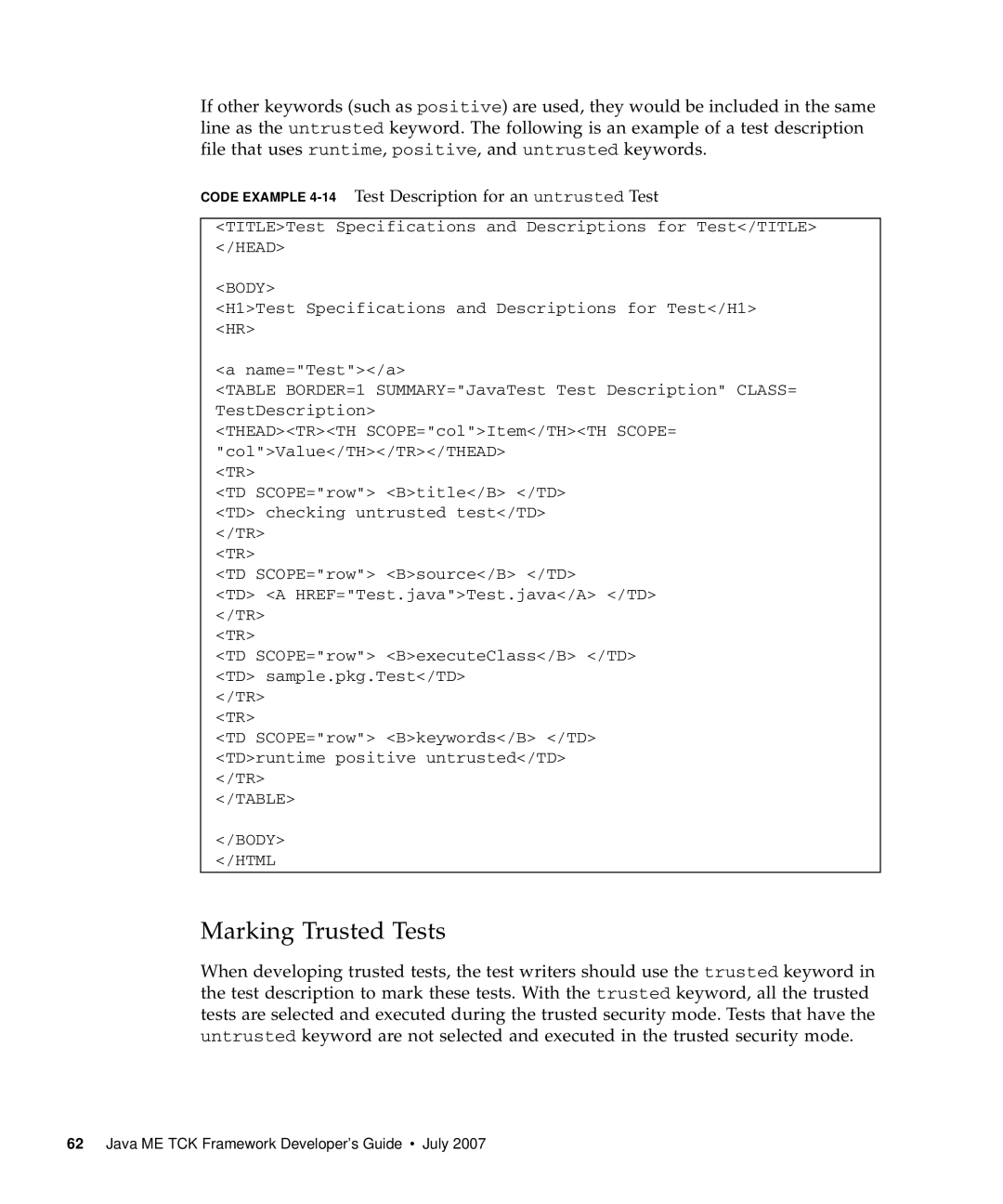
If other keywords (such as positive) are used, they would be included in the same line as the untrusted keyword. The following is an example of a test description file that uses runtime, positive, and untrusted keywords.
CODE EXAMPLE 4-14 Test Description for an untrusted Test
<TITLE>Test Specifications and Descriptions for Test</TITLE> </HEAD>
<BODY>
<H1>Test Specifications and Descriptions for Test</H1> <HR>
<a name="Test"></a>
<TABLE BORDER=1 SUMMARY="JavaTest Test Description" CLASS= TestDescription>
<THEAD><TR><TH SCOPE="col">Item</TH><TH SCOPE= "col">Value</TH></TR></THEAD>
<TR>
<TD SCOPE="row"> <B>title</B> </TD> <TD> checking untrusted test</TD> </TR>
<TR>
<TD SCOPE="row"> <B>source</B> </TD>
<TD> <A HREF="Test.java">Test.java</A> </TD> </TR>
<TR>
<TD SCOPE="row"> <B>executeClass</B> </TD> <TD> sample.pkg.Test</TD>
</TR>
<TR>
<TD SCOPE="row"> <B>keywords</B> </TD> <TD>runtime positive untrusted</TD> </TR>
</TABLE>
</BODY>
</HTML
Marking Trusted Tests
When developing trusted tests, the test writers should use the trusted keyword in the test description to mark these tests. With the trusted keyword, all the trusted tests are selected and executed during the trusted security mode. Tests that have the untrusted keyword are not selected and executed in the trusted security mode.
